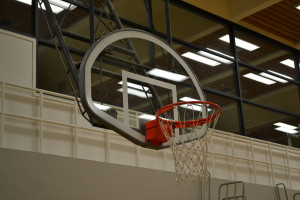Problems and Solutions for a Players Head and Vision during their Jump Shot
Helping a player with their Jump Shot is always one of the more important roles a coach must perform in assisting in their player’s development. The jump shot of a player can be greatly improved with some simple coaching points of emphasis. However, to become a good shooter, players will need to be committed to improving their action each, and every time they shoot. Every jump shot will become an opportunity to improve. One area that needs to be explored in helping a player improve their shot is their head position and vision.
Head position is a very interesting aspect of a players jump shot. The head of course determines in a millisecond the distance from the basket and subsequently how much force needs to be allied to the shot. The problem for some players is that their head is constantly changing positions during their jump shot and never moving a straight line up and down (we want to see the head moving along the Longitudinal Axis as straight as possible). The best result when a player is shooting is for the head to move up and down in a straight line so they have a constant distance on which to base their judgement. Never moving closer or further away from the basketball. When the jump shot is initiated, the head starts and finishes in exactly the same spot.
This is important as the player will then be more likely be able to keep constant vision and calculate more accurately and consistently, their distance to the basketball hoop and therefore needed effort for the shot.

Another common issue often talked about by players is not understanding where to look when attempting their jump shot. Knowing where to look seems a very obvious question when initially. However, this is a more complex problem when given some time to mature in a coach’s mind.
For example, if a player is to look at the front of the basket when shooting they will inevitably have more of their shots fall short. This is because more shots will hit the front of the basket only to rebound back, or if low enough of the front of the basket the ball will go down to the floor off the front of the rim. Similarly, with any spot on the basket, where a player chooses to focus their vision, will be where they aim the ball for. This will result in more shots (once a player is competent) making contact with the basketball hoop at this point.
The recommended place for players to aim for in the middle of the hoop, an the back of the basket. A player’s vision should fix upon the point where the bracket meets the rim of the basketball hoop. It is in this place where a basketball should be intended to make contact with the hoop, if at all.
By reducing the movement in all directions except for up and down for a players head, then there will be a significant benefit to a players jump shot consistency. In attempting to keep a players head more under control, other benefits to secondary areas of the shooting action might also experience positive benefits such as the lower and upper body. These areas too will need to be reviewed in an attempt to limit the negative effects on a players head position.
So too with a players vision of the basket improving, there should be positive affects upon other parts of the jump shot. For example, a player might start to be able to replicate more consistently the amount of effort and energy used when performing a shot. This will also have an impact on a players arms and hands during the shooting action as these mechanics have significant visual elements imbedded in the performance.







